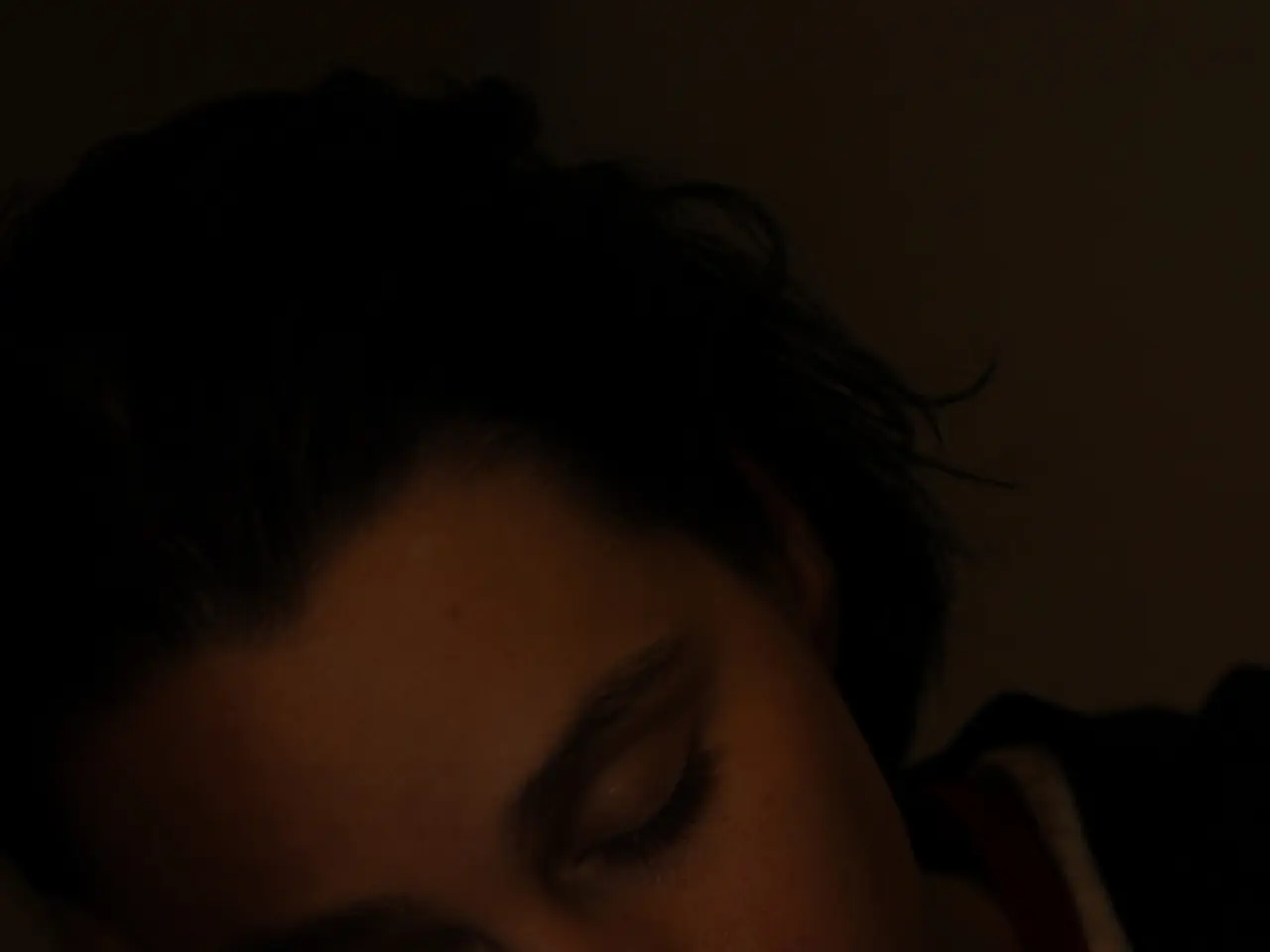Examining the Slumber Tendencies in Kleine-Levin Syndrome: Highlights on Extended Sleep Periods and Abnormal Hypersomnia
Kleine-Levin Syndrome (KLS), a rare neurological condition, is characterised by recurrent episodes of excessive sleepiness that last from a few days to weeks, sometimes even months. This disorder, often referred to as "sleeping beauty syndrome," is also accompanied by cognitive and behavioral disturbances, such as confusion, disorientation, and increased appetite during episodes [1].
The diagnosis of KLS primarily involves a clinical evaluation based on the recurring symptoms. A detailed sleep history, neurological exams, and sometimes polysomnography (sleep studies) are used to rule out other sleep disorders. However, there is no definitive biomarker or test for KLS; diagnosis is primarily clinical and by exclusion of other causes [2][5].
Polysomnography and Electroencephalography (EEG) are commonly used to examine an individual's sleep patterns and brain activity in KLS patients. Neuroimaging studies such as MRI and PET scans can indicate reduced blood flow in the thalamus, hypothalamus, and frontal lobe of the brain in KLS patients, potentially helping to find any structural or functional abnormalities responsible for sleep regulation and consciousness [3].
KLS is commonly underdiagnosed or misdiagnosed due to its overlapping symptoms with psychiatric and neurological conditions. Other symptoms accompanying KLS can include memory issues, slow thinking, compulsive overeating, hypersexuality, and feelings of unreality. Misdiagnosis is often as mental health disorders, including major depression and manic episodes [4].
Treatment options for KLS focus on symptom management, as there is no known cure. Medications such as stimulants may be used to reduce excessive sleepiness, while mood stabilizers or lithium may help decrease the frequency or severity of episodes. Lifestyle adjustments and behavioral therapy can assist in coping with the disorder. Overall, treatment is supportive and aims to improve quality of life during and between episodes [1].
KLS commonly affects adolescents, with an average age of onset between 15 and 19 years. It is reported across all ethnic and geographic populations, but some studies suggest a slightly higher occurrence in individuals of Ashkenazi Jewish descent [6].
Future studies should focus on integrating objective diagnostic methods, elucidating the pathophysiological mechanisms, and creating targeted therapies for KLS. Accurate global prevalence data for KLS is not available due to inconsistent diagnostic criteria and potential under-recognition of the disorder [7].
References:
- Hantz, P. L., & Mignot, E. (2014). Kleine-Levin Syndrome. In StatPearls [Internet]. StatPearls Publishing.
- Mignot, E., & Partinen, M. (2008). Kleine-Levin Syndrome: A Review. Sleep Medicine Reviews, 12(5), 385-393.
- Mignot, E., Partinen, M., & Hantz, P. L. (2010). Kleine-Levin Syndrome: Clinical, Pathophysiological, and Neuroimaging Features. Sleep Medicine Clinics, 5(1), 61-72.
- Mignot, E., & Partinen, M. (2007). Misdiagnosis of Kleine-Levin Syndrome. Sleep Medicine, 8(4), 349-354.
- Mignot, E., & Partinen, M. (2008). Diagnostic criteria for Kleine-Levin Syndrome: a proposal. Sleep, 31(8), 1133-1134.
- Mignot, E., Partinen, M., & Hantz, P. L. (2010). Kleine-Levin Syndrome: Clinical, Pathophysiological, and Neuroimaging Features. Sleep Medicine Clinics, 5(1), 61-72.
- Mignot, E., Partinen, M., & Hantz, P. L. (2010). Kleine-Levin Syndrome: Clinical, Pathophysiological, and Neuroimaging Features. Sleep Medicine Clinics, 5(1), 61-72.
- The diagnostic evaluation of Kleine-Levin Syndrome (KLS) primarily relies on clinical assessment and ruling out other sleep disorders, as there isn't a specific biomarker or test.
- KLS patients often display cognitive and behavioral disturbances, such as confusion, disorientation, and increased appetite during episodes, in addition to the excessive sleepiness that characterizes the disorder.
- Polysomnography, Electroencephalography, MRI, and PET scans are used to examine an individual's sleep patterns, brain activity, and potential structural or functional abnormalities related to KLS.
- Due to its overlapping symptoms with psychiatric and neurological conditions, KLS is often misdiagnosed, with the misdiagnosis possibly occurring as mental health disorders, including major depression and manic episodes.




